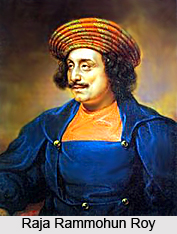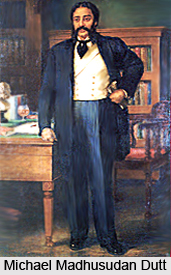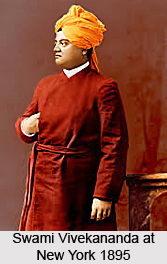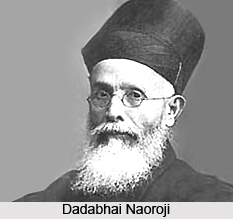 Indian Renaissance occurred after the emergence of the British forces, when a mass religious and social awakening took place. The foremost reformists had undertaken the task with a lot of eagerness and enthusiasm. The word "Renaissance" stands for rebirth and Indian renaissance refers to that period which was marked by the quest of knowledge and development of science and arts. The change that took place in the Indian social scenario is popularly known as the "Indian Renaissance".
Indian Renaissance occurred after the emergence of the British forces, when a mass religious and social awakening took place. The foremost reformists had undertaken the task with a lot of eagerness and enthusiasm. The word "Renaissance" stands for rebirth and Indian renaissance refers to that period which was marked by the quest of knowledge and development of science and arts. The change that took place in the Indian social scenario is popularly known as the "Indian Renaissance".
Emergence of Indian Renaissance
The period when the Hindu religious system was revived can be termed as Hindu renaissance, which was marked the restoration of the Hindu deities and tradition. The Guptas, pioneer the Golden age resuscitated all lost glory by setting up a tradition, which was very Indian, with developments in Sanskrit literature, art forms and religion at its peak. The late 18th century marked the beginning of a new era with movements essential for a complete reformation.
The most significant renaissance had occurred during the period of colonial rule in India. The British imperialists had ruled and dominated for the most prolonged period, till the year 1947. The Indian Independence had earned the countrymen their vision of Swaraj and made them their own masters.
Renaissance was a solemn effort by a differentiated and higher class of people, who had made them distinguishable in every sphere of art, culture and education. As a result, these native intellectuals earned themselves an opportunity to interact with the English class, when speaking, writing, or associations are being spoken about. Such was their influence upon the then Indian society, that Bengal renaissance has now come to be coined as a cardinal element under British Indian episodes.
Social Reformers in Indian Renaissance
Indian Social Reformers had germinated mostly from Bengal, which was inclined towards a tendency to continuously produce luminaries in every field. Some of them are as follows:
Ramakrishna Paramahansa was a religious teacher and his contributions were important for a traditional revival of Hinduism comparable to Chaitanya`s. Swami Vivekananda had established Ramakrishna Mission on May 1st, 1897, with a motto for assisting in welfare services with a spiritual point of view. He had advocated Vedanta philosophy and Yoga not only to India, but also to the West.
 Aurobindo Ghose was a nationalist, scholar, poet and philosopher who preached a new spiritual path called the integral Yoga. He had contributed to Hinduism greatly with a new interpretation of Vedas concerned with inner spirituality. Known as the "Father of the Indian Renaissance", Ram Mohan Roy was founder of the Brahmo Samaj and among the pioneers of the Indian socio-religious reform movements. He had exerted supreme influence upon politics, social life, education and religion alike. Swami Dayananda Saraswati was the founder of Arya Samaj.
Aurobindo Ghose was a nationalist, scholar, poet and philosopher who preached a new spiritual path called the integral Yoga. He had contributed to Hinduism greatly with a new interpretation of Vedas concerned with inner spirituality. Known as the "Father of the Indian Renaissance", Ram Mohan Roy was founder of the Brahmo Samaj and among the pioneers of the Indian socio-religious reform movements. He had exerted supreme influence upon politics, social life, education and religion alike. Swami Dayananda Saraswati was the founder of Arya Samaj.
Sir Syed Ahmed Khan was a politician and a pioneer of modern education among the Muslim community in India. He was the founder of the Muhammedan Anglo-Oriental College, which later developed into the Aligarh Muslim University.
 Reformist Groups during Indian Renaissance
Reformist Groups during Indian Renaissance
The religious reformers and reformist groups played an integral part in the ushering in of Indian renaissance, though they also functioned at regional levels. There were many groups that developed during this period.
•Brahmo Samaj was the society formed by the ideas of developing a universal religion. Ideas behind Raja Ram Mohan Roy`s Brahmo Movement included abolition of caste system, abolition of dowry and abolition of Sati and improvement of the educational system.
•Hindu Dharma Sabha was founded in 1830 by Raja Ram Mohan Roy to limit the intrusion of English culture in India.
•Sanatan Singh Sabha was the original Singh Sabha formed in 1873 by Sikhs in Amritsar to recover a distinctive Sikhism.
•Tattvabodhini Sabha was an essential reformist organisation, which was founded by Debendranath Tagore to popularise Brahmo Dharma or Brahmo faith.
•Paramahansa Yogananda founded Yogoda Satsanga Society in 1917 on the banks of the Ganga River at Dakshineswar Kali Temple.

•Vinayak Damodar Savarkar or Veer Savarkar formed the Ratnagiri Hindu Sabha in 1924, aiming to the preservation of Hindu social and cultural heritage.
•Nikhil Manipuri Mahasabha was initially a Hindu nationalist organisation of Manipur, formed by Maharaja Churachand Singh.
•Keshab Chandra Sen founded the Sangat Sabhas, Believer`s Associations in 1860.
•Hitaishini Ganga Dharma Sabha was founded in Haridwar for the benefit of the cow, social order and the holy River Ganges.
•The Radhasoami Satsang Beas, based in Northern India, is a philosophical organisation, following the spiritual teachings of all religions.
•Manav Dharma Sabha was one of the earliest socio-religious reform movements in Gujarat and British India, founded on 22nd June 1844.
•Prarthana Samaj, or the Prayer Society in Sanskrit is a movement for religious and social reform in Maharashtra that was based on previous reform movements and traditions of the state.
•Nowrozjee Furdoonjee and Dadabhai Naoroji founded the Rahnumai Mazdayasnan Sabha and put in considerable efforts. The Sabha was meant for the purification of Zoroastrian religion, which was being prejudiced by Hindu elements.
India did not merely stand still, while Europe had gone on towards some bright goal during the renaissance period. The cultural and ideological struggle taken up by the socio-religious movements helped to build up national consciousness. Thus, Indian renaissance paved the way for the growth of nationalism.



















